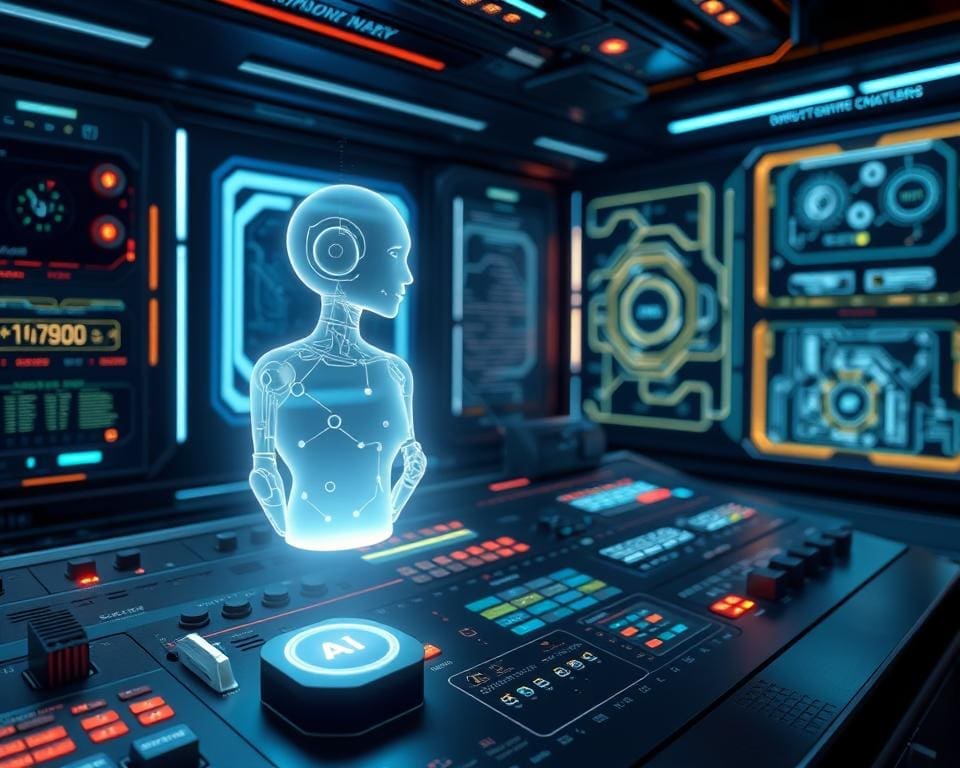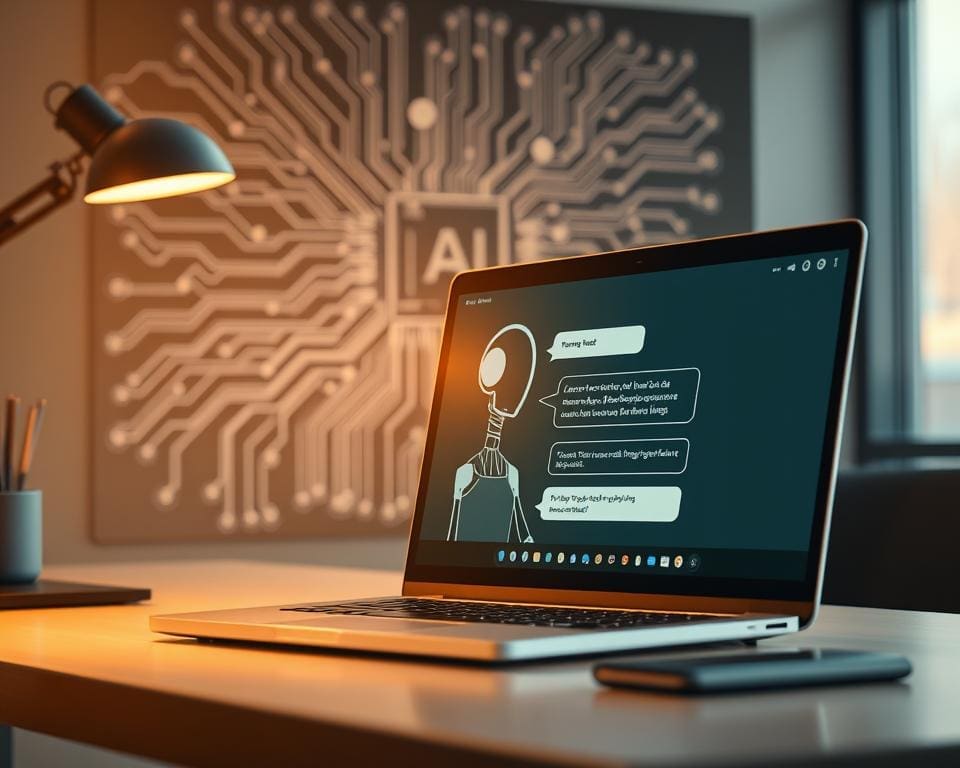In today’s rapidly advancing digital landscape, the question of whether a chatbot is powered by real AI or scripts has become increasingly pertinent. As businesses across the United Kingdom integrate chatbot technology into their customer service frameworks, understanding the nuances of these systems is essential. Real artificial intelligence offers the promise of adaptive learning and nuanced responses, transforming user interactions into conversational experiences. Conversely, script-based solutions confine themselves to pre-written responses, responding only to specific inputs. Recognising the distinction between these two approaches can not only enhance user satisfaction but also shape the efficacy of customer service strategies.
As we delve deeper into the realm of chatbot technology, we aim to illuminate the critical factors that distinguish genuine AI from scripted solutions, paving the way for informed decisions for businesses and consumers alike.
Understanding Chatbot Technology
As the landscape of technology progresses, chatbot technology has significantly transformed, reflecting the dramatic shifts in user expectations and communication preferences. The journey of chatbot evolution reveals a fascinating transition from basic scripted responses to sophisticated systems that leverage artificial intelligence.
The Evolution of Chatbots
The origins of chatbots date back to the 1960s with early experiments like ELIZA, which highlighted the potential of conversational interfaces through simple rules-based systems. As time advanced, so did the capabilities of these solutions, leading to more nuanced interactions. The introduction of natural language processing (NLP) and machine learning birthed a new generation of chatbots that understand context and intent, marking a pivotal step in chatbot technology.
Different Types of Chatbots
Understanding the various types of chatbots is crucial for companies looking to adopt this technology. There are primarily three categories:
- Rule-Based Chatbots: These rely on pre-defined flows and scripts to engage users effectively. They work best for straightforward inquiries.
- AI-Driven Chatbots: These leverage sophisticated algorithms, enabling them to learn from interactions and improve over time, making them ideal for complex communication.
- Hybrid Models: Combining rule-based and AI elements, hybrid chatbots offer flexibility, adapting to various user needs for optimal engagement.
Each type has its unique strengths and contexts in which they perform the best, guiding organisations in selecting the right chatbot solution tailored to their operational requirements.

Is your chatbot powered by real AI or scripts?
In today’s digital landscape, understanding the difference between AI-powered solutions and script-based solutions becomes essential for businesses aiming to enhance user interaction. Clarity on this subject aids in identifying chatbot technology and its capabilities, enabling organisations to make informed decisions tailored to their specific needs.
Defining Real AI vs. Script-Based Solutions
Real AI encompasses systems that possess the ability to learn from user interactions, adapting over time to deliver more personalised experiences. In contrast, script-based solutions follow pre-defined paths for conversation, limiting their capacity for dynamic engagement. Recognising these fundamental differences is crucial for anyone seeking to optimise their customer service approach.
How to Identify Your Chatbot’s Technology
Identifying chatbot technology involves a clear assessment of its functionalities. Key indicators include:
- Response variability: AI-powered solutions exhibit diverse answers based on context, while script-based solutions offer consistent, pre-scripted replies.
- Adaptability: Determine how well the chatbot handles unexpected queries. A learning AI adapts to new challenges, unlike a scripted counterpart.
- Integration features: Evaluate the ability to connect with other applications and data sources, often a hallmark of advanced AI technologies.
- Feedback mechanisms: AI-powered solutions typically include ways to learn from user feedback, enhancing future interactions.
The Role of Artificial Intelligence in Chatbots
Artificial intelligence significantly transforms user interaction within chatbot systems. This technology allows for advanced features that create a seamless experience for users and organisations alike. By incorporating elements like emotion detection and contextual understanding, AI allows chatbots to offer more personalised and engaging conversations, driving user experience enhancement.
How AI Enhances User Experience
With artificial intelligence at the core, chatbots can analyse user inputs in-depth. They can understand subtleties in language, recognising emotions and intent. This capability leads to:
- Personalised interactions: Customers receive responses tailored to their needs and preferences.
- Efficient problem-solving: AI chatbots provide immediate assistance, reducing wait times for users.
- Natural conversations: The dialogue flows smoothly, making users feel more connected to the service.
Key Components of AI-Powered Chatbots
Understanding the components of AI chatbots helps businesses leverage their full potential. Key elements include:
- Natural Language Understanding (NLU): This component enables the chatbot to comprehend user input accurately.
- Dialogue Management: It governs the flow of conversation, ensuring relevant and coherent exchanges.
- Machine Learning Algorithms: These algorithms allow chatbots to learn from interactions, continuously improving their responses.
Script-Based Chatbots Explained
Script-based chatbots represent a foundational technology in the chatbot landscape. These systems operate on predetermined responses, following a scripted pathway that dictates how they interact with users. They excel in providing straightforward answers but lack the flexibility to adapt to varied conversations. Understanding the essence of these chatbots illuminates both their strengths and drawbacks.
What Are Script-Based Chatbots?
Script-based chatbots utilise specific scripts to guide interactions. When users pose questions or make requests, these chatbots deliver responses based exclusively on the predefined scripts. This programmed approach allows for quick replies; however, it constrains the chatbot’s ability to engage in complex or unpredictable dialogues. Businesses may find this method beneficial for handling routine queries without extensive human oversight.
Limitations of Script-Based Solutions
The limitations in chatbot programming are significant when considering the use of script-based chatbots. These systems often struggle with unexpected user inputs, causing frustration for customers who seek tailored responses. Common issues include:
- Inability to address unique or varied inquiries
- Reduced customer satisfaction due to rigid interactions
- Increased operational costs associated with managing repetitive queries
Choosing the right chatbot technology is crucial for enhancing customer experience while minimising operational challenges. Businesses striving for effective customer engagement may need to consider alternatives that offer greater adaptability and intelligence.
Advanced Chatbot Solutions: Features and Benefits
Advanced chatbot solutions are transforming the way businesses interact with their customers. The integration of these sophisticated bots with various technologies creates a powerful synergetic effect, enabling companies to streamline their operations and enhance user experience.
Integration with Other Technologies
Technology integration plays a pivotal role in the effectiveness of advanced chatbot solutions. By connecting chatbots with customer relationship management (CRM) systems, data analytics tools, and e-commerce platforms, businesses can access valuable insights. These insights aid in crafting personalised marketing strategies that resonate with target audiences. Such a holistic approach not only improves efficiency but also fosters deeper customer connections, leading to increased satisfaction.
Real-World Applications of Advanced Chatbots
The applications of chatbots extend to various sectors, showcasing their versatility across industries. In retail, for example, chatbots can assist customers in finding products, managing orders, and handling inquiries around the clock. The healthcare industry uses chatbots to schedule appointments and provide advice based on patient queries, significantly reducing administrative workloads. Fintech companies leverage chatbots for real-time transaction support and financial guidance, fostering customer trust and engagement. These examples underscore the substantial impact advanced chatbot solutions have on operational efficiency and customer engagement.
AI-Powered Chatbot Development
Investing in AI chatbot development delivers numerous advantages that enhance customer interaction and engagement. Businesses can enjoy the benefits of AI chatbots through significant scalability and the capability to manage increasing volumes of user inquiries. Enhanced accuracy in responses is another key aspect, ensuring that consumers receive relevant and timely information that meets their expectations.
Why Choose AI for Your Chatbot?
AI chatbots stand out due to their potential to learn and adapt over time. This flexibility allows them to improve their responses based on user interactions, leading to a more personalised experience. The ability to analyse large datasets enables businesses to obtain valuable insights into customer behaviours and preferences, further enhancing service quality.
Factors to Consider During Development
When venturing into AI chatbot development, several critical chatbot development factors must be taken into account:
- Defining core objectives: Establish clear goals that align with business needs and customer expectations.
- Choosing the right technology stack: Select appropriate tools and frameworks that ensure robustness and scalability.
- Prioritising user experience: Ensure the design is intuitive and user-friendly, focusing on delivering value to end-users.
The Impact of Machine Learning in Chatbots
Machine learning in chatbots revolutionises the way these digital assistants interact and respond to users. By leveraging advanced algorithms, chatbots continuously learn from every interaction, thereby enhancing their chatbots efficiency and effectiveness. This ongoing improvement leads to increasingly personalised experiences for users, ultimately fostering greater satisfaction and loyalty.
How Machine Learning Improves Chatbot Efficiency
Utilising machine learning, chatbots can analyse vast amounts of data quickly, optimising responses based on user inputs. Key benefits include:
- Enhanced understanding of user intent, allowing for more accurate replies.
- Continuous learning from previous conversations, which improves overall performance.
- Reduced response time, leading to a seamless user experience.
Case Studies of Successful Machine Learning Chatbots
Several companies demonstrate the advantages of integrating machine learning in their chatbot systems. Noteworthy examples include:
- Google’s Duplex: This chatbot showcases realistic conversations by mimicking human speech patterns, resulting in highly effective interactions.
- IBM’s Watson: Utilising natural language processing and machine learning, Watson delivers precise responses, significantly improving customer support engagement.
NLP Chatbot Integration for Enhanced Interaction
Integrating natural language processing (NLP) into chatbot systems is a pivotal step towards achieving enhanced chatbot interactions. NLP empowers chatbots to understand the subtleties of human language, allowing for conversations that feel more organic and engaging. With advances in NLP integration, users can experience interactions where their needs and questions are understood in a more sophisticated manner, fostering a sense of connection that scripted responses simply cannot achieve.
As customers increasingly demand personalised and meaningful experiences, the role of NLP becomes even more critical. Enhanced chatbot interactions driven by NLP not only lead to greater customer satisfaction but also contribute to higher retention rates and stronger brand loyalty. By offering nuanced responses that address specific queries or concerns, businesses can build trust and rapport with their audience, ultimately transforming customer engagement into a valuable relationship.
Looking to the future, the evolution of NLP technology will continue to influence chatbot capabilities, opening up avenues for more intelligent, multi-dimensional solutions. These advancements will redefine customer engagement strategies, ensuring that chatbots do not merely function as automated responders but evolve into essential tools that genuinely enhance meaningful interaction. As organisations embrace NLP integration, the future of chatbot technology promises a landscape where human-like dialogues are not just possible, but the norm.









